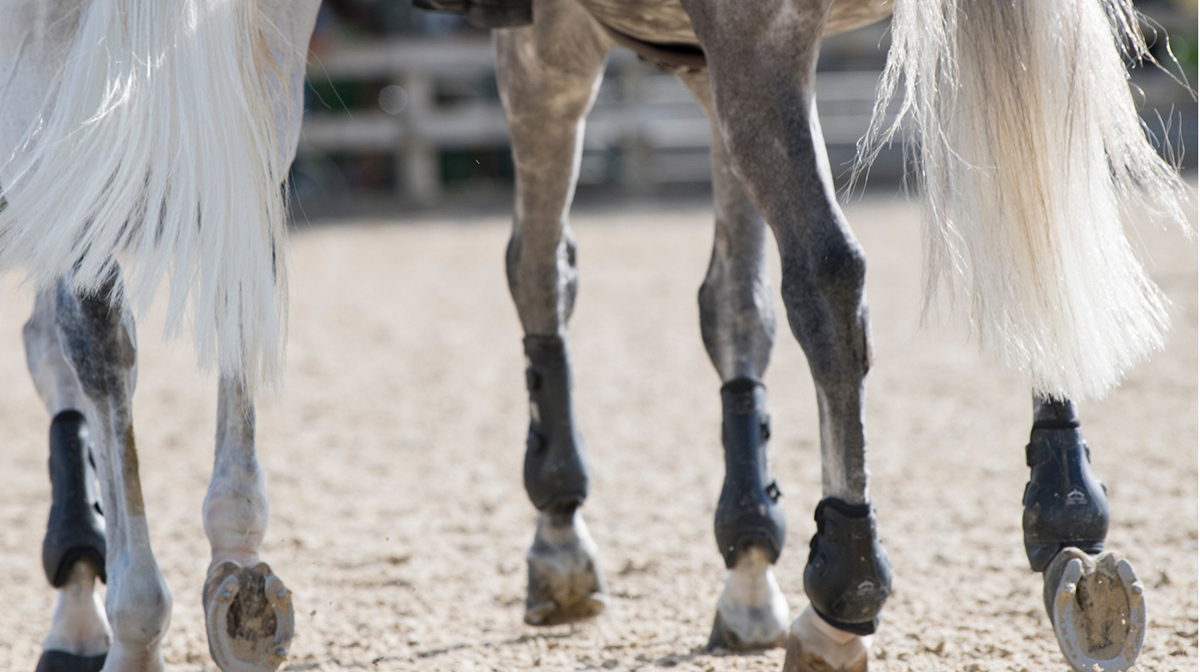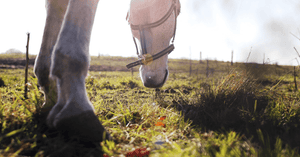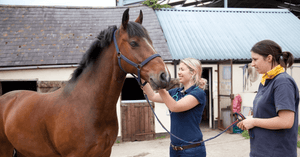
Horses, just like us humans, are subject to the joint condition known as arthritis. This is a condition that affects around 30% of horses, typically more common in older horses.
There isn’t an instant cure to arthritis, but learning more about it and seeking professional help remains essential. At Protexin Equine, we care about horses, and here’s everything you should know if you suspect your horse is experiencing arthritis.
What is Arthritis in Horses?
Arthritis, or joint disease, is a common condition in horses characterised by the gradual breakdown of joint cartilage. This cartilage, similar to human cartilage, typically acts as a cushion which allows smooth and pain-free joint movements. Over time, the cartilage deteriorates, this leads to pain, inflammation, and restricted mobility.
Horses of all ages and breeds can develop arthritis, but it’s more common in older horses or those with intensive performance careers.
Symptoms and Signs of Arthritis in Horses
Early detection of arthritis in horses is essential for effective management and limiting deterioration of the joint. . The most common signs of arthritis in horses include:
Lameness or Stiffness — Horses suffering from arthritis may appear stiff or lame, especially after rest or in colder weather.
Swelling or Heat — If joints appear swollen or feel warm to the touch without an injury, it indicates inflammation, which points to potential arthritis.
Reduced Range of Motion — When horses have difficulty moving, like flexing or extending the joints, you may notice changes in their gait.
Behavioural Changes — Due to discomfort, horses might become reluctant to be ridden. They may also show irritability during grooming.
Decreased Performance — A decline in performance levels can signal underlying joint issues.
It’s essential to note that these signs point to arthritis, but it can be another issue. The only way to be certain is to ask for professional help. For example, mud fever can also make the horse uncomfortable, but you may spot other signs on the skin and hair as well. Therefore, it’s vital to consider all symptoms and consult with your vet for further advice.
Diagnosing Arthritis in Different Parts of the Horse
Some horses may not outwardly show signs of pain from arthritis but there are ways to identify where the problem lies. Common areas your vet may examine are:
Lower limb
Hocks
Back
Neck
Your vet may investigate these areas further by using a combination of physical examination, watching the horse move, imaging (X-rays +/- ultrasound) and potentially using local anaesthetic ‘blocks’.
What Causes Horse Arthritis?
Horses can develop arthritis for several reasons. It can be due to age related changes due to stress on their joints. Performance horses are at greater risk of injury or trauma. Joint injuries or repeated concussive forces can lead to long-term damage.
Finally, there’s an unavoidable genetic component. So, poor limb conformation can predispose certain joints to uneven or faster wear.
How Do Vets Treat Arthritis?
Veterinarians adopt a multi-faceted approach to treating arthritis in animals. They focus on pain management and slowing the progression of the disease. One of the primary methods involves the use of medication. Vets may commonly prescribe Non-steroidal anti-inflammatory drugs (NSAIDs) to relieve pain and reduce inflammation.
Another treatment option includes joint injections. It can involve hyaluronic acid, corticosteroids, or regenerative substances (such as stem cells). These injections aim to maintain joint health and provide localised relief from pain. Alongside these medical treatments, veterinarians often recommend dietary joint health supplements, such as glucosamine, chondroitin sulfate, and omega-3 fatty acids. These supplements support cartilage repair and help reduce inflammation.
Exercise and physiotherapy are also integral to supporting a horse with arthritis. . Controlled exercises and therapies, including swimming or low-impact groundwork, are encouraged to help maintain joint function and strengthen the surrounding muscles. In more severe cases of arthritis, the vet may consider surgical options.
Managing Your Horse’s Arthritis
Managing a horse with arthritis requires a tailored plan that integrates a balanced approach to exercise, diet, and various therapies. Maintaining your horse at a healthy weight is essential, as it helps minimise joint strain and can significantly alleviate discomfort.
Incorporating appropriate exercise is also vital. Low-impact activities, like walking , can help maintain joint mobility without exacerbating the condition. Additionally, paying attention to hoof care is essential. Proper hoof trimming and shoeing play a critical role in reducing joint stress to ensure your horse can move comfortably.
Environmental adjustments can further enhance your horse’s comfort and well-being. Providing soft bedding and avoiding hard surfaces can significantly reduce strain on joints and will encourage your horse to lie down if needed. t. By combining these strategies, you can effectively manage your horse’s arthritis and improve their overall quality of life.
Prevention of Arthritis
Preventing arthritis is all about minimising joint stress and ensuring optimal health. You can schedule regular check-ups with your vet to ensure early detection.
Of course, a horse will always be healthier with a balanced diet. You can use nutrients, such as omega-3 fatty acids, to support overall joint health. It’s also essential to allow horses to rest and not overwork them, especially at a young age.
Can a Horse with Arthritis be Ridden?
Yes, a horse with arthritis may be ridden depending on the severity of their condition. The key is to modify the riding routine to avoid putting excessive strain on the affected joints.
Low-impact exercises, such as walking or light trotting, are typically recommended. However, always consult your veterinarian to ensure the exercise plan aligns with your horse’s condition.
FAQs
What are the first signs of arthritis in horses?
Early signs include lameness, stiffness, and reduced performance.
Can arthritis be cured in horses?
Unfortunately, we can’t cure arthritis. The goal is to manage symptoms and maintain the horse’s quality of life.
What are the best supplements for arthritis?
Vets often recommend glucosamine, chondroitin sulfate, and omega-3 fatty acids to support joint health.
Is there a surgical option for severe arthritis?
In some cases surgery is a viable option, but this is best discussed with your vet.
What types of horses are at risk?
Due to cumulative joint stress, older horses and those in high-performance activities are most at risk.









